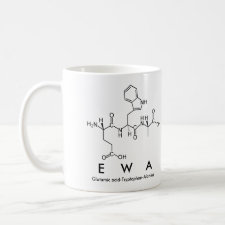
Authors: Moczko E, Díaz R, Rivas B, García C, Pereira E, Piletsky S, Cáceres C
Article Title: Molecularly Imprinted Nanoparticles Assay (MINA) in Pseudo ELISA: An Alternative to Detect and Quantify Octopamine in Water and Human Urine Samples.
Publication date: 2019
Journal: Polymers
Volume: 11
Issue: (9)
Article Number: 1497.
DOI: 10.3390/polym11091497
Alternative URL: https://www.mdpi.com/2073-4360/11/9/1497
Abstract: In 2004, octopamine was added to the list of drugs banned by the world anti-doping agency (WADA) and prohibited in any sport competition. This work aims to develop a new analytical method to detect octopamine in water and human urine samples. We proposed a pseudo-enzyme-linked immunosorbent assay (pseudo-ELISA) by replacing traditional monoclonal antibodies with molecularly imprinted polymer nanoparticles (nanoMIPs). NanoMIPs were synthesised by a solid-phase approach using a persulfate initiated polymerisation in water. Their performance was analysed in pseudo competitive ELISA based on the competition between free octopamine and octopamine-HRP conjugated. The final assay was able to detect octopamine in water within the range 1 nmol L-1 - 0.1 mol L-1 with a detection limit of 0.047 ± 0.00231 μg mL-1 and in human urine samples within the range 1 nmol L-1 - 0.0001 mol L-1 with a detection limit of 0.059 ± 0.00281 μg mL-1. In all experiments, nanoMIPs presented high affinity to the target molecules and almost no cross-reactivity with analogues of octopamine such as pseudophedrine or l-Tyrosine. Only slight interference was observed from the human urine matrix. The high affinity and specificity of nanoMIPs and no need to maintain a cold chain logistics makes the nanoMIPs a competitive alternative to antibodies. Furthermore, this work is the first attempt to use nanoMIPs in pseudo-ELISA assays to detect octopamine
Template and target information: octopamine
Author keywords: molecularly imprinted nanoparticles assay, Molecularly imprinted polymers, ELISA, Doping, Octopamine



Join the Society for Molecular Imprinting

New items RSS feed
Sign-up for e-mail updates:
Choose between receiving an occasional newsletter or more frequent e-mail alerts.
Click here to go to the sign-up page.
Is your name elemental or peptidic? Enter your name and find out by clicking either of the buttons below!
Other products you may like:
 MIPdatabase
MIPdatabase









